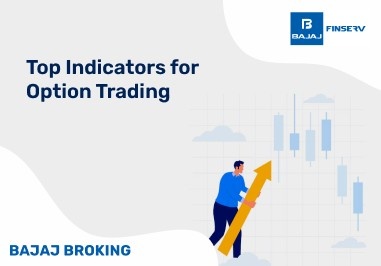BAJAJ BROKING
PDP Shipping & Projects IPO is Open!
Open a Free Demat Account
Trade Now, Pay Later with up to 4x
Track Market Movers Instantly
Share Market Today | Gift Nifty Indicates Weak Opening, Markets Likely to Consolidate
Synopsis:
Today’s share market features how Indian markets may consolidate amidst key developments: China’s tax policy impacts metals, ACME secures Rs 3,753 crore loan, Godrej faces ED probe, Adani Total tackles gas cuts, Nureca partners Zepto, FIIs record net outflow of -1850.
Latest Market News
1. Metal names like NALCO Ltd., Vedanta Ltd., and Hindalco Ltd. will be in focus - China announced that the export tax rebate for Aluminium and Copper products will be withdrawn with effect from December 1, 2024.
2. ACME Sun Power gets Rs 3,753 CR loan from REC for FDRE projects in Rajasthan & Gujarat. ACME Leading Through Innovation.
3. GodrejProperties denies allegations amid ED probe into fraud and money laundering claims.
4. AdaniTotalGas says GAIL further cut gas supply to co by 13% effective November 16, adding there would be an adverse impact on the profitability of the company & it shall calibrate retail prices to end consumers to mitigate the impact of lower allocation.
5. Nureca signs a distribution agreement with Zepto.
6. Cash Segment (Provisional) FII: -1850. DII: +2482 on Friday.
ACME SOLAR HOLDINGS LTD
Trade197.41-3.26 (-1.62 %)
In-Depth Market Insights: Global Outlook, Derivatives & More
US Share Market News
Performance Overview:
US benchmark equity indexes closed lower Friday as markets assessed remarks by Federal Reserve officials and the latest economic data.
Sector-Specific Movements:
The Nasdaq Composite declined 2.2% to 18,680.1, while the S&P 500 fell 1.3% to 5,870.6.
The Dow Jones Industrial Average lost 0.7% to 43,445. Technology saw the steepest decline among sectors, down 2.5%, while utilities led the gainers.
Economic Indicators:
For the week, the Nasdaq declined 3.2%, and the S&P 500 shed 2.1%. The Dow decreased 1.2%.
Other Asset Classes
Treasury Yields:
The US 10-year yield increased 2.5 basis points to 4.45% Friday, while the two-year rate advanced 1.3 basis points to 4.31%.
Currency:
The dollar index ticked up 0.03% to 104.44, on track to gain just above 0.1% for the week.
Commodities:
West Texas Intermediate crude futures oil was flat at 0.1% to $67.11 a barrel whereas Brent crude futures gained 0.3% to $71.24. Prices were headed for a weekly loss amid concerns around "waning" demand in China.
Gold fell 0.3% to $2,566.40 per troy ounce, while silver lost 0.8% to $30.32 per ounce.
Asian Markets
General Trends:
Asian stocks dipped early Monday as traders reined in expectations of Federal Reserve interest rate cuts following fresh signs of US economic resilience.
Specific Index Performance:
Japanese and Australian shares fell. South Korea’s benchmark bucked the trend, led by Samsung Electronics Co.’s rally after it announced a stock buyback plan.
Japanese benchmark Nikkei average opened down 0.99% at 38,259.59, while the broader Topix shed 0.69% at 2,692.82.
Australia's S&P/ASX 200 Index slipped 0.2% to below 8,270, reversing some of the gains from the previous session.
Elsewhere this week, China’s banks are expected to keep their loan prime rates unchanged after a cut in October.
India Market Outlook
GIFT Nifty Projection:
Gift Nifty suggests a weak opening for the Indian markets and is likely to consolidate in the broad range of 23,300 - 23,950.
Market in Previous Session:
Indian benchmark indices extended their correction for the sixth straight session on November 14, with the Nifty closing below 23,550 as selling pressure impacted FMCG, PSU Bank, and oil & gas stocks.
At close, the Sensex was down 110.64 points or 0.14 per cent at 77,580.31, and the Nifty was down 26.35 points or 0.11 per cent at 23,532.70.
Following a flat start, the market traded in positive territory for the first few hours, but selling at higher levels wiped out intraday gains, pulling the Nifty below 23,500.
Nevertheless, buying in realty, auto, and media stocks helped the index close above 23,500 amid ongoing volatility.
The Market remained shut on Friday, November 15, on account of Guru Nanak Jayanti.
Nifty Short-Term Outlook:
Immediate bias continues to remain down. Index sustaining below last week's low (23,484) will open further downside towards the 23,150 followed by 22,800 levels. On the higher side, the recent breakdown area of 23,800 will act as immediate resistance followed by last week's high of 24,336.
The index needs to start forming higher highs and higher lows in the weekly chart to signal a pause in the current corrective trend.
On the market breadth front, only 12% of stocks are above 50 days EMA from the Nifty 500 universe during the last week. Historically, such extreme reading in market breadth results in a technical pullback in subsequent weeks.
Intraday Levels:
Nifty: Intraday resistance is at 23,470 followed by 23,430 and 23,380 levels. Conversely, downside support is located at 23,662, followed by 23,765 and 23,950.
Bank Nifty: Intraday resistance is positioned at 49,932, followed by 49,650 and 49,369, while downside support is found at 50,250, followed by 50,554 and 50,870.
Derivative Market Analysis
Nifty:
The highest call OI is positioned at 24500 followed by the 24000 level, whereas the highest put OI is positioned at the 23000 level followed by the 23500 level.
The highest call OI addition was seen at 24500 with immediate addition at 24000 indicating stiff resistance at a higher level. A straddle formation was seen at 23500 making it an important level to watch for.
According to option chain analysis, a broader range for Nifty is 23000 and 24000.
The Nifty put-call ratio is now positioned at 0.88.
Bank Nifty:
The highest call OI is positioned at 52000 followed by the 51000 level, whereas the highest put OI is positioned at 49500 followed by the 50000 level.
The highest call OI addition was seen at 51700 with immediate addition at 50500 indicating stiff resistance at a higher level. Put writers were active below 52000 making it a crucial support.
According to option chain analysis, a broader range for Bank Nifty is 50000 and 51000.
The Bank Nifty put-call ratio is now positioned at 0.95.
Midcap Nifty:
Immediate highest call OI is been noted at the 12200 level which will serve as immediate resistance.
Whereas the immediate major put OI has been noted at the 12000 level which will serve as a crucial zone.
Fin Nifty is likely to trade within the range of 12000 and 12200 level.
Stay on top of the latest market news with Bajaj Broking’s insights. Our point-to-point expert analysis digs deep into the surface, empowering you with a unique perspective on domestic and global stock market events. Get all the current share market news, including US share market updates in one place and make wise investment decisions.
Disclaimer: Investments in the securities market are subject to market risk, read all related documents carefully before investing.
This content is for educational purposes only. Securities quoted are exemplary and not recommendatory.
For All Disclaimers Click Here: https://bit.ly/3Tcsfuc
Read More Blogs
Our Secure Trading Platforms
Level up your stock market experience: Download the Bajaj Broking App for effortless investing and trading












